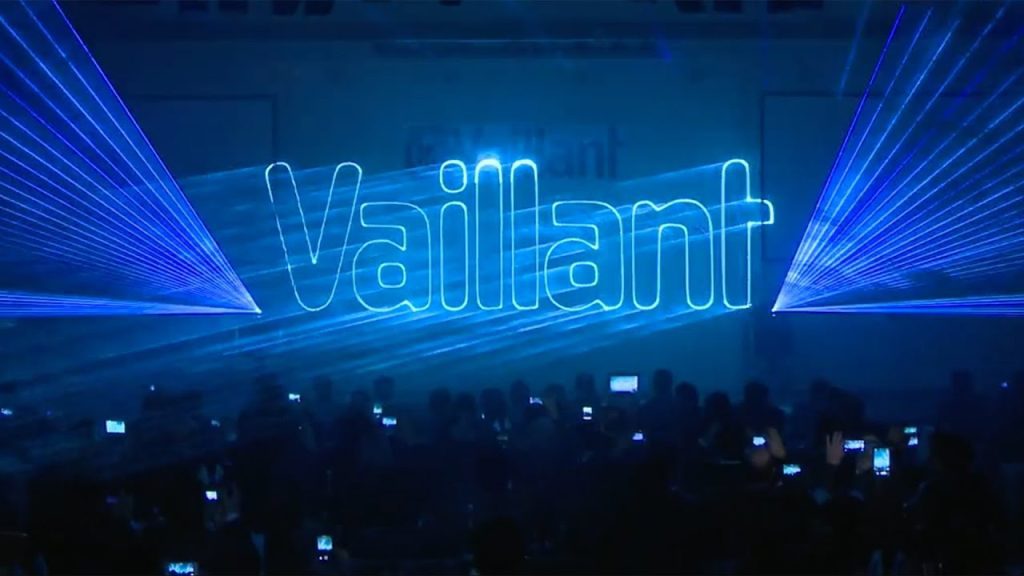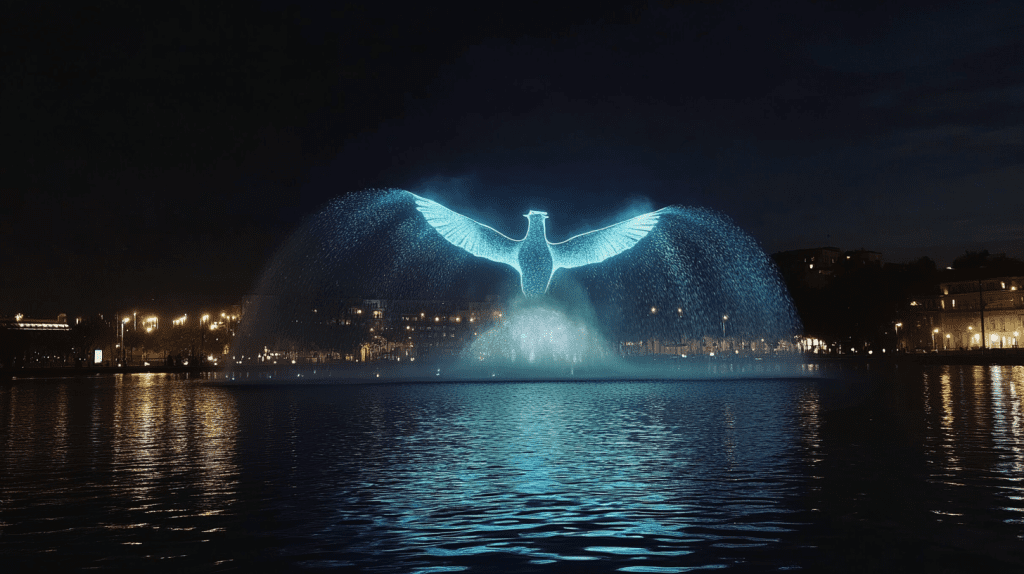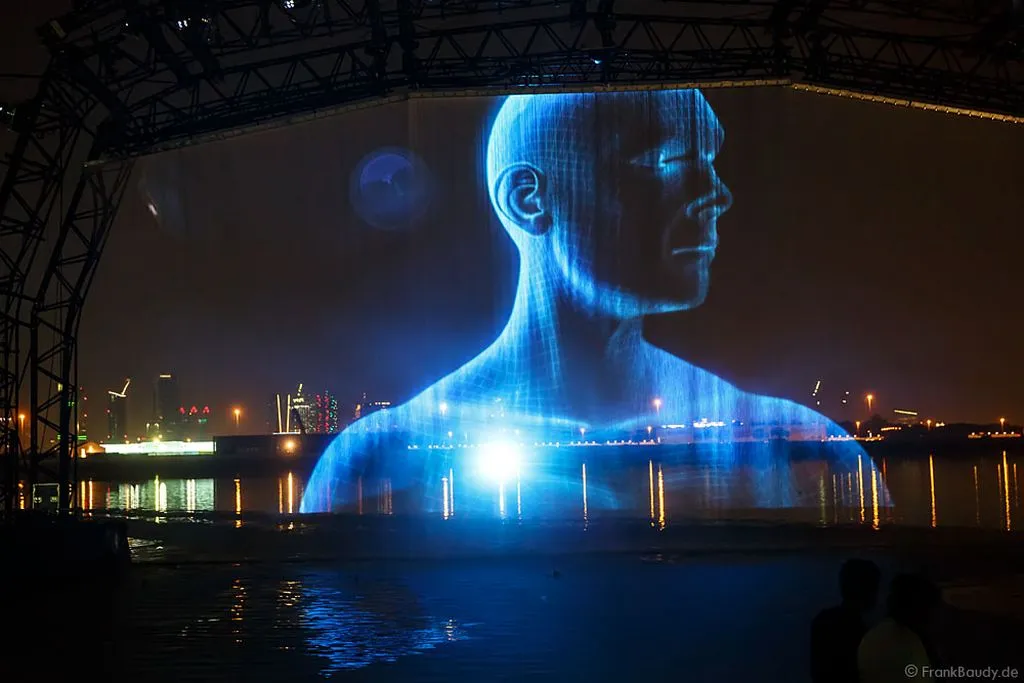Holograms
Laser Holograms
Laser holograms use full-colour laser projection to create sharp, floating line-based imagery — logos, typography, vector graphics and outlines suspended in space. With haze or light smoke, the beams become visible, creating that sci-fi light-in-air effect clients immediately connect with.
Our laser holograms pair incredibly well with our laser light shows.
The look is clean, high-tech and graphic. Because the system renders edges rather than surfaces, it delivers clarity and impact instead of realism.
The mesh screen stays near invisible until projection hits it, so the content reads as light in the room, not a standard projection.
Common Applications
- Logo reveals and product launches
- Corporate branding and keynote visuals
- Trade show displays and exhibition centrepieces
- Architectural linework and conceptual sketches
- High-tech stage features and light shows
Video Holograms
Video holograms project photorealistic motion content onto a near-invisible mesh using 3D projection mapping. People, products, animations and textured objects can appear to occupy real space rather than a screen.
This approach is used when realism, human presence or detailed visual storytelling matter. A presenter can appear virtually, a product can rotate with visible colour and texture, or a process can be animated volumetrically. Unlike laser systems, this handles surfaces, shadow and depth. If you prefer to project on a building or solid surface, check out our projection mapping or building projections.
Filming talent or organic forms usually involves green screen and background removal. Logos, 3D models and existing video assets can be adapted quicker. Controlled lighting gives the strongest effect, and darker venues work well. Systems run from media servers, live-cued or automated. Outdoor setups are viable where wind is manageable.
Common Applications
- Human presenters and virtual appearances
- Product showcases with full texture and colour
- Architectural and real estate visualisation
- Immersive brand experiences and launches
- Animated storytelling and short-form content








